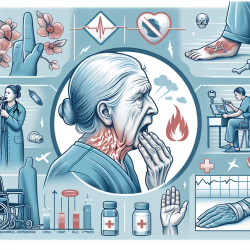Introduction
The study titled "A Comparison of Indigenous and Non-Indigenous Survivors of Sexual Assault and Their Receipt of and Satisfaction with Specialized Health Care Services" offers critical insights for practitioners aiming to improve their service delivery to diverse populations. This research highlights the distinct experiences and needs of Indigenous and non-Indigenous survivors, providing a data-driven foundation for enhancing therapeutic outcomes.
Key Findings
The study analyzed data from 948 women, of whom 116 identified as Indigenous. The findings revealed significant differences in the presentation, sociodemographic, and service use characteristics between Indigenous and non-Indigenous survivors. Key differences include:
- Indigenous survivors were more likely to present to a hospital within 24 hours of an assault and were often accompanied by police.
- They tended to be younger, more likely to live in institutional settings, and more likely to report community affiliations as sources of support.
- Indigenous survivors were more likely to be assaulted by a parent or guardian and to engage in safety planning and referrals to community agencies.
Implications for Practitioners
Practitioners can leverage these findings to tailor their approaches to better meet the needs of Indigenous survivors. Here are some actionable strategies:
- Timely Intervention: Encourage quick access to services post-assault, as early intervention is crucial for effective care and evidence collection.
- Cultural Sensitivity: Develop culturally sensitive protocols that acknowledge the unique social and historical contexts affecting Indigenous survivors.
- Community Engagement: Foster relationships with community organizations to provide holistic support and referrals.
- Training Programs: Implement training that addresses the specific needs and challenges faced by Indigenous survivors, focusing on familial abuse dynamics.
Encouraging Further Research
While this study provides a comprehensive overview, it also highlights the need for further research. Practitioners are encouraged to engage in or support studies that explore:
- The long-term outcomes of Indigenous survivors who receive specialized care.
- The impact of cultural competence training on service satisfaction and outcomes.
- The effectiveness of community-based interventions in reducing re-victimization rates.
Conclusion
By integrating the insights from this study, practitioners can enhance their service delivery to Indigenous survivors of sexual assault, ensuring that care is both effective and culturally appropriate. For those interested in delving deeper into the research, the original paper can be accessed here.










